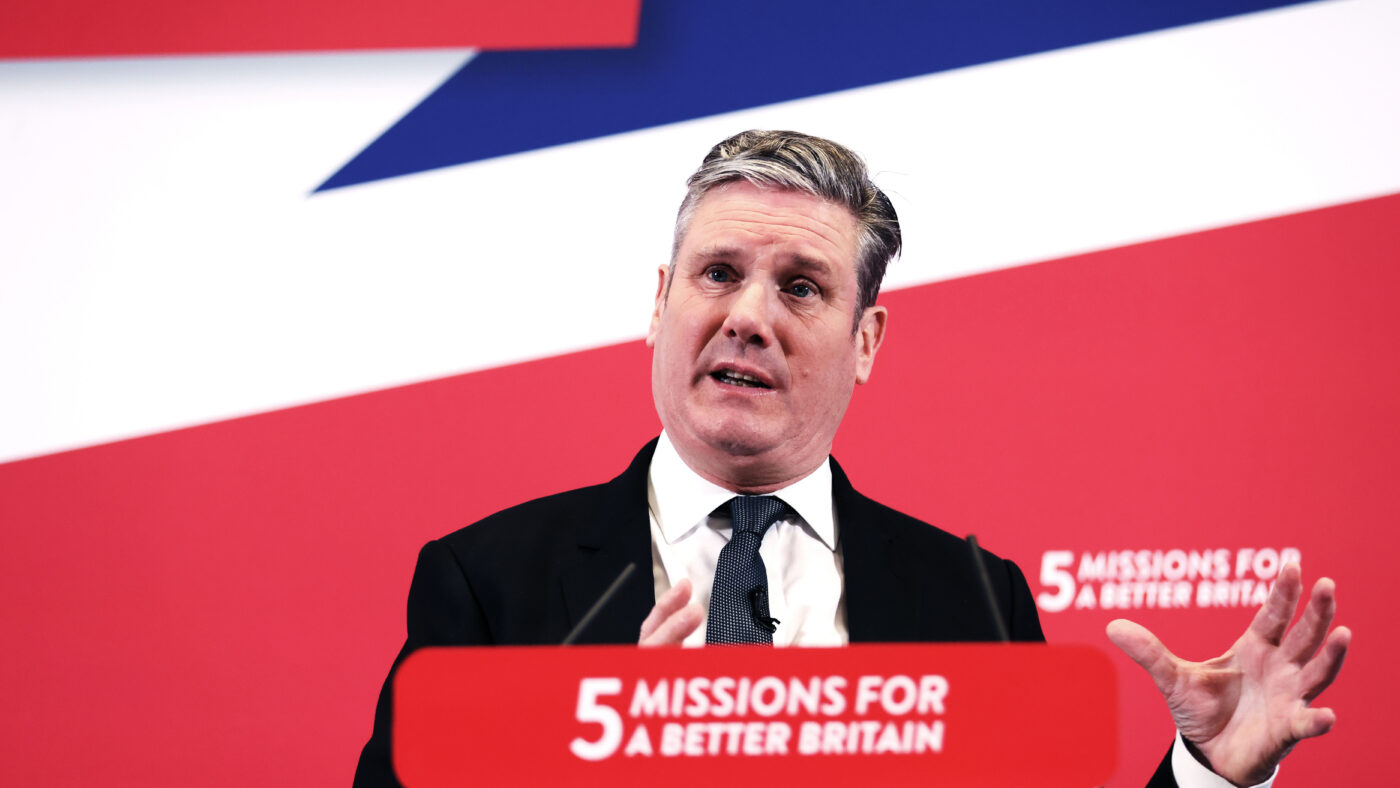Labour doesn’t have much in the way of big ideas for the education system. By far its best-known policy at the moment is a pledge to dismantle so-called ‘tax breaks’ used by private schools. The party claim that this will raise £1.7bn, with £1.6bn coming from VAT and £0.1bn from ending business rates relief. This extra money will, they say, help improve social mobility in the state school system.
In reality though, it’s a prospectus riddled with dodgy maths, false assumptions and what seems an almost wilful blindness to behavioural change.
Let’s start with the idea that private schools are benefiting from a ‘tax break’. You don’t need to be an economist to observe that ‘tax breaks’ are relative – preferential advantages, compared to something else. But what is the comparison here? It’s unclear why we should compare VAT-free education to VAT-able Ferraris. It certainly can’t be a comparison between the VAT-free, business-rate-free private schools and VAT-free state schools, in which business rates are paid by the the state, to the state
This is little more than Newspeak. There are no ‘tax breaks’ here, just two tax regimes: schools paid for out of general taxation, and schools that are not, with the added twist that those who pay for the latter are disproportionate contributors of tax in the first place.
That’s why this policy is such a dangerous deceit. Few people oppose either the idea of improving state schools, or better opportunities for poorer households.. But the brutal truth, as Labour intend to prove, is that private schools are terrific for the public finances – there is no pot of gold at the end of this rainbow
Indeed, from a purely fiscal perspective, it would be a great help to increase private education for two practical reasons.
First, it would free up financial resources in the state sector, which could be used to pay teachers more, reduce class sizes, invest in infrastructure, increase the Pupil Premium or whatever you like. Second, families would have to earn the fees by working for taxable income, in the process adding taxable value to their customers, employers and employees.
Instead, Labour wants to push in the opposite direction.
Labour’s calculations appear to assume that a 15% effective fee increase will cause zero or minimal withdrawals from private school. (It’s expected to be 15% because private schools will be able to offset 5% on various purchases they make). I say ‘appear to assume’ because, to my knowledge, they haven’t actually shown their workings. Meanwhile, Keir Starmer blithely asserts that their calculations have been ‘stress-tested over a long period’. Well, to this voter, it would be interesting to understand what tests have Labour actually done, under which assumptions, accounting for which risks? Who has scrutinised and challenged the results?
If they have conducted such an exercise, it’s the ‘risks’ section which would pose the biggest problems.
Now, it is partly true that private school families have shouldered above-inflation fee increases for decades – but only partly, because more and more British families have been edged out, with their places taken by wealthy foreign students. But contrary to what Labour and the IFS say, this is no guide to the future, for a host of reasons.
For one thing, a generational shift has taken place and the 2023-2033 cohort may have different motivations and preferences to the 2000-2010 cohort. Affordability is also a far bigger issue now, given the pressures of inflation, high interest rates and a political class determined to heap as much of the tax burden as possible on to higher earners. What’s more, the 15% increase Labour have planned will sit on top of previous increases, so we aren’t comparing like with like.
These rather obvious factors combine to show that the risks to demand are both large and overwhelmingly negative. Rather than making clumsy extrapolations from barely relevant history, competent policymakers could explore the actual affordability of private schools, and the distribution of that affordability.
How many private school families are on household incomes at various bands around £100-250,000? What are school fees, with and without VAT, as a percentage of their disposable income? How many of those already have two full-time working parents? What are their reserves of wealth, and how many years of fees do they have left? How healthy are their pensions? What is the appetite and ability for younger families to plan and save for private schools, given current and projected earnings and their own living costs? Those questions would indicate how many families are ‘marginal’ in terms of affording fees, and how big the risk is that they won’t manage to afford the 15% increase.
As it stands, Labour’s hypothesis seems to be that all these families can simply absorb the VAT hike – it’s certainly a theory that should be researched, scrutinised and publicly debated before inflicting it, at great potential risk, on the real world.
If children do withdraw from (or stop signing up for) private schools, there are negative shocks on both supply and demand. Some of the former have been covered by education thinktank EDSK, which reports thatfamilies who no longer send their kids to private school will pay no VAT on fees, and willneed state school places that are both unfunded and may not even physically exist. EDSK conclude that 5% of withdrawals generates net tax receipts of £991m, while 25% of withdrawals garners just £19m. But these estimates remain generous as loss of pupil revenue will drive cost-cutting and could cause school closures, with implications for the taxable employment of teachers, other staff and suppliers. Not all of those staff will end up at state schools and some, in the worst case scenario, could end up on benefits. All these problems will be compounded if some independent schools are forced to close (noting that pupil withdrawals are unlikely to be evenly distributed), indirectly leading to the loss of entire pupil groups.
The demand side effects of this policy also remain, to my knowledge, unexplored. That is a matter of neglect not just from Labour, but everyone who should be concerned about this policy.
Taking the kids out of private school means parents are immediately significantly wealthier for the remainder of their children’s school years, potentially by some hundreds of thousands of pounds. Some families may simply choose to spend more on luxuries, some may move house to get their children into elite (and socially exclusive) state schools. The greater risk, however, is that without fees to pay, some of these parents may choose to reduce the amount they work, rather than continue with a time-poor, high-stress existence with two full-time jobs.
A policy that puts at risk the labour participation of higher earners matters a great deal. Most obviously, these are higher and top-rate taxpayers – it doesn’t take many of them to quit, go part-time, or retire earlier before the taxman is losing billions on income tax and NICs.
It’s seldom a good idea to take risks with the employment of highly-productive people. There are secondary effects on their customers, employers and employers – the lost private-sector value-add from work, all of which is taxable in various ways. That could include, for example, the loss of a doctor or two. Also in secondary effects, you would find the dismissal of armies of taxable cleaners, gardeners, and nannies, whose employment depends on people that are cash-rich but time-poor. Finally, there is the taxable downstream economic activity from all those groups.
The point is that whatever one’s ideal vision for the English education system, Labour’s policy risks doing great damage to state and private schools alike, as well as to the public finances. If they are truly serious about this policy, the opposition should clearly show its working and be prepared to have its assumptions vigorously challenged.
Click here to subscribe to our daily briefing – the best pieces from CapX and across the web.
CapX depends on the generosity of its readers. If you value what we do, please consider making a donation.


